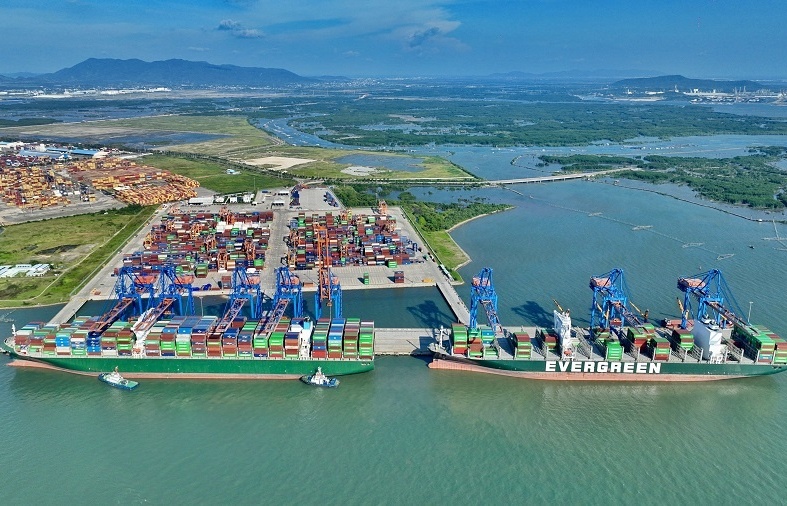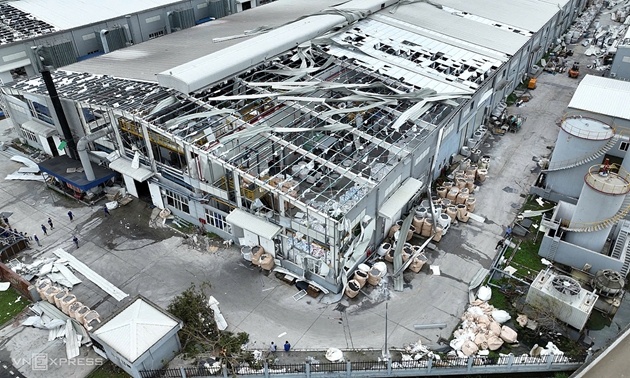Analysts predict weak GDP growth in 2014
The high-profile Vietnam Annual Economic Report 2014, released last week by the Vietnam Centre for Economic and Policy Research under Vietnam National University’s Economics and Business College showed two notable scenarios for GDP growth this year, with one reaching 4.15 per cent and the other, 4.88 per cent; this is far below last year’s 5.42 per cent and the government’s target of 5.6-5.8 per cent for this year.
“These low levels are based on an analysis of Vietnam’s on-going weak economic situation,” said the centre’s director Nguyen Duc Thanh, one of the report’s authors.
In the first five months of this year nearly 27,900 firms went bankrupt, up 20.5 per cent on-year, according to a Ministry of Planning and Investment report on Vietnam’s five-month production released last week.
The Central Institute for Economic Management’s deputy head Vo Tri Thanh said he was not as “pessimistic” about Vietnam’s growth in 2014 as the centre’s report, but was also not “upbeat” about the current situation.
“Some international organisations have forecast that if Vietnam continues facing shocks like the situation with the Chinese oil rig, the country’s economy may be held to 5.4 per cent growth again this year [same as 2013]. This would mean the economy is in stasis, or even lagging behind potential,” he said.
In agreement with his views, National Finance Supervisory Commission Chairman Vu Viet Ngoan said Vietnam’s economy was still in an “extremely difficult” state, with very slow recovery due to weak production. “Vietnam cannot reach growth rates it saw in past years [around 6-7 per cent] now.”
“Our analysis shows that Vietnam’s labour productivity is growing very slowly, at only 2 per cent per year, while the government has slashed development investment from over 30 per cent previously to about 25 per cent now,” Ngoan added. “Meanwhile, investor confidence is dropping and the government is faced with public debt and budget headaches.”
Vietnam’s total budget deficit in the first five months of this year has already amounted to around VND45 trillion ($2.14 billion).
Meanwhile, local economic experts Le Kim Sa and Nguyen Cam Nhung also said it would be difficult for Vietnam to reach its growth target for the year amid local weak production, which showed no major signals of recovery in the coming months, and also external impacts.
They said China, for example, had loosened its exchange rate control from 1 to 2 per cent early this year. The yuan was likely to continue to depreciate in the near future to promote exports. This would create huge pressure on Vietnam’s economy as local products have to compete with Chinese products in the US and EU, and cheap Chinese products would have more opportunities to penetrate into the Vietnamese market.
Last year Vietnam spent $37 billion on imports from China, up 28 per cent on-year, and earned export turnover of $13.2 billion, up 7 per cent on-year. The total trade deficit for the year was $23.8 billion.
According to experts, Vietnam depends heavily on China in terms of net imports of materials and fuels, construction equipment, machines, and construction services for many energy and infrastructure projects, while it’s a net exporter of agricultural products like rubber, rice and fruit.
What the stars mean:
★ Poor ★ ★ Promising ★★★ Good ★★★★ Very good ★★★★★ Exceptional
Latest News
More News
- Vietnam’s economy on track for 6.5 per cent growth despite Typhoon Yagi, says HSBC (October 01, 2024 | 16:46)
- Vietnam urges China to expand market access for agricultural products and strengthen trade ties (October 01, 2024 | 16:42)
- IMF predicts Vietnam's economic growth to reach 6.1 per cent in 2024 (September 30, 2024 | 18:26)
- Deli Group breaks ground on $270 million factory in Hai Duong (September 30, 2024 | 18:17)
- Government considering tax on multiple properties (September 27, 2024 | 20:17)
- Accuracy more vital than ever in dawn of AI (September 26, 2024 | 20:44)
- Vietnam remains attractive destination for US businesses (September 26, 2024 | 20:23)
- New innovation centre inaugurated during HEF 2024 (September 25, 2024 | 09:00)
- China's Geely to build $168 million automobile facility with Tasco in Thai Binh (September 24, 2024 | 19:03)
- Spate of claims made in typhoon aftermath (September 19, 2024 | 17:00)




















 Mobile Version
Mobile Version